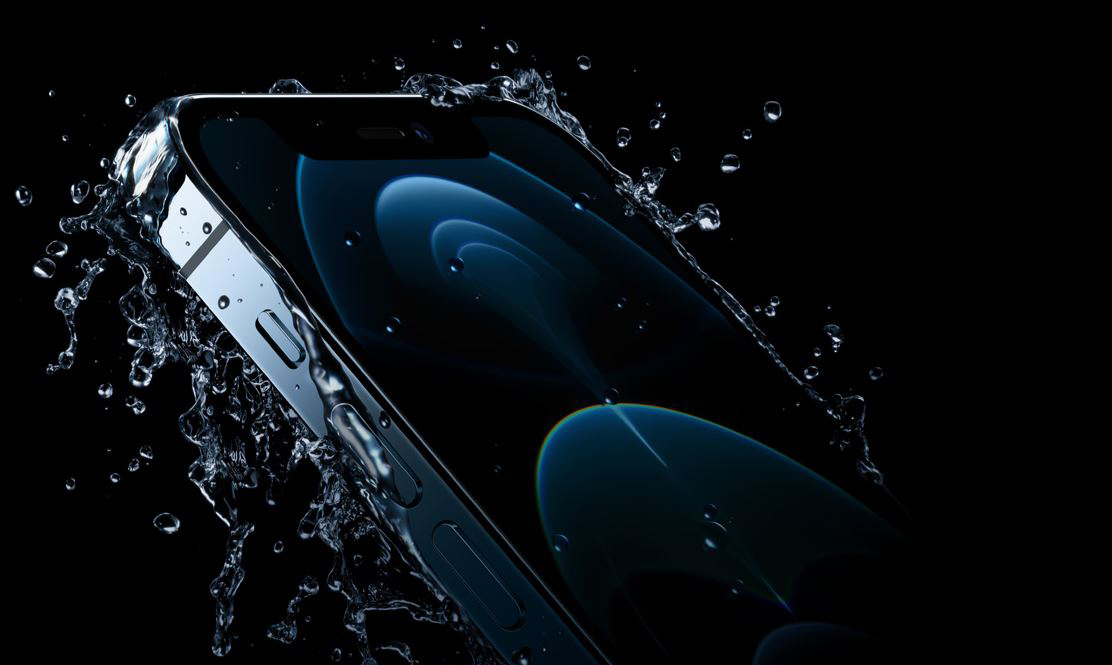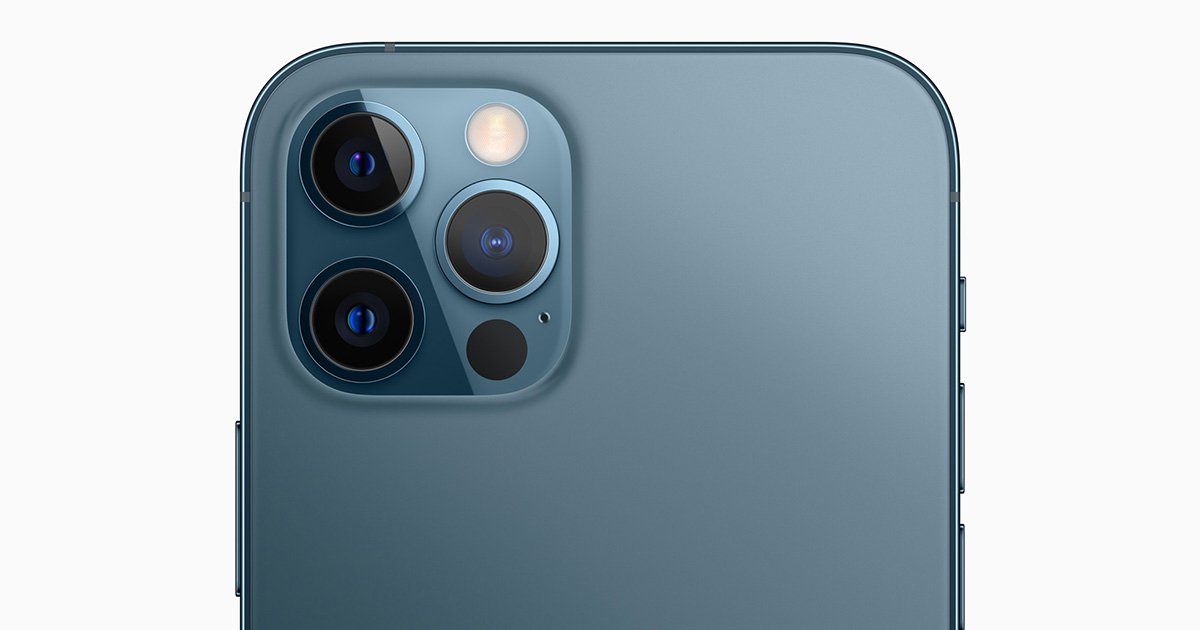Apple has held its classic and long-awaited presentation of its new phones, as well as the of new HomePod mini.
Four new iPhones were announced, with new features both inside and out. The iPhones will support new 5G telecommunications technology (sub-6GHz and mmWave for the USA, only sub-6GHz for other countries), which can reach up to speeds of 200 Megabits per second in realistic conditions, while in ideal conditions it can reach 3.5 – 4 Gigabits. With the support of the 5G protocol, all new iPhones will surf, download files, photos, videos, and music, almost instantaneously.
iPhone 12
Apple’s basic model for 2020 is the ‘iPhone 12’. It has the same screen dimensions as the iPhone 11, at 6.1 inches, however the screen is actually something completely new. To begin with, the screen uses ‘Super Retina XDR’ technology, while the iPhone 11 screen is LCD IPS, and furthermore, it has a higher resolution of 2532×1170, with a 460 ppi density (the iPhone 11 has a 1792×820 resolution and 326 ppi). The iPhone 12 supports HDR, Wide Color DCI-P3, it has a 2,000,000:1 contrast ratio and a brightness of 625 to 1200 nits for HDR. These features translate into even better image quality, clearer and more distinct content in your daily use, from surfing the web, to looking at photos, watching videos, browsing social media, and playing video games with unparalleled graphics.
The screen, just like the entire device, is protected against water and finger marks (IP68 standard), while it is resistant under water at a depth of up to 6 metres for up to 30 minutes. In fact, all the new iPhones have four times the resilience in comparison to last year’s models, should you be unlucky enough to drop your phone.
The main star inside the phone is none other than the central chip that is called ‘A14 Bionic’. Just like in previous years, the central chip has evolved, and this year there are several changes. Manufactured at 5 nanometres, it has 11.8 trillion transistors making up a 6-core CPU, a 4-core GPU, as well as AI – machine learning circuits capable of carrying out 11 trillion operations per second. In short, the A14 Bionic provides the four new iPhone 12 models with more than enough power on all levels: when using the internet and social media there is no lag, no matter how “heavy” the pages are, games take on a new graphics flow, while videos and photos use all this power together with complicated operations carried out by the AI to produce even more detail, higher quality, and better lighting.

Moving on to the new iPhone 12 cameras, there is one on the front and two on the back. So, on the back there are two 12 MegaPixel cameras. One has an Ultra Wide 120o field of view and f/2.4 aperture and the other has a Wide lens with an f/1.6 aperture. Among their many features, both cameras have a 2x optical zoom, 5x digital zoom, bokeh, stabiliser (to keep from taking shaky pictures due to the natural movement of our hands), 63 MegaPixel panoramic photographs, audio zoom, and Smart HDR3 for an exceptionally broad range of lively colours. Also, this year a lot of attention has been paid to the cameras, the embedded software, and the hardware, through the Deep Fusion technique for better recording everywhere, even in low light conditions.
Video capabilities are even better than last year, thanks to the support of Dolby Vision (up to 30 fps). Dolby Vision provides professional level colours, clarity, and details in videos. At the same time, we can record 4K videos at up to 60 frames per second. Video options include 2x optical zoom, 3x digital zoom, slow motion (Full HD 1080p up to 240 frames per second), image stabilisation, autofocus, and night time-lapse. An important new feature is that videos are recoded and played back in Dolby Vision, HDR10 and HLG for the first time on an iPhone.
The front camera is 12 MegaPixel resolution with an f/2.2 aperture, maintaining all of the above characteristics of the two rear cameras on both photos and videos. Furthermore, these new lens technologies and the A14 Bionic chip produce selfies with even greater detail and livelier colours, while in low light conditions they are better than any iPhone to date.
FaceID facial recognition remains the same as in previous models, which is the best in this sector. The new iPhone 12 capacity is 64, 128, and 256 GB, while it is available in four colours: black , white, green, and blue.
A very important difference from all other iPhones that have gone on the market since 2007, is that all four of the new models, iPhone 12/mini/Pro/Pro Max, will not come with a charger and earbuds as standard, only the USB-C connection cable, which provides a connection to your computer and (low-power) charging. Anyone looking for faster charging can purchase the suitable Apple charger or a compatible device for wireless charging, such as the new Apple MagSafe.
iPhone 12 mini
This year Apple decided to throwback to smaller sizes, without, however, sacrificing anything but a few inches. The new smaller model is called the ‘iPhone 12 mini’ and it is exactly what its name says: mini! It has the exact same technical characteristics as the iPhone 12 as regards the central A14-Bionic chip, the cameras, storage options (64, 1128, 256 GB), while it is available in the same four colours.
The only difference is the screen: 5.4 inches and a resolution of 2340×1080 with a 476 ppi density (namely, slightly better density than the iPhone 12).
However, just like the iPhone 1212, the iPhone 12 mini does not come with a charger or earbuds, just the USB-C connector and low-power charging cable.

iPhone 12 Pro and Pro Max
And now, the flagships: the iPhone 12 Pro and Pro Max. As regards the central chip, it is the same A14 Bionic that the iPhone 12 and iPhone 12 mini have. Furthermore, they are just as resilient to bumps, being dropped, liquids, and vibrations, in accordance with the IP68 standard. The iPhone 12 Pro screen is the same as that of the “basic” iPhone 12; 6.1 inches Super Retina XDR with a 2532×1170 resolution and an 460 ppi density. However, the similarities stop at the iPhone 12 Pro Max, as the screen is a 6.7-inch Super Retina XDR with a 2778×12184 resolution and a 458 ppi density.
The major difference is in the cameras: 3 + 1 LiDAR-type cameras on the rear and 1 on the front. The three cameras are: 12 MegaPixel Ultra Wide with an f/2.4 aperture and a 120o field of view, 12 MegaPixel Wide with an f/1.6 aperture, and 12 MegaPixel TelePhoto with an f/2.0 aperture on the iPhone 12 Pro or an f/2.2 aperture on the iPhone 12 Pro Max.
Furthermore, they have 2x optical zoom in capabilities, 2x optical zoom out capabilities, 4x optical zoom range, and 10x digital zoom on the iPhone 12 Pro, while the iPhone 12 Pro Max has a 2.5 optical zoom in, 2x optical zoom out, 5x optical zoom range, and 12x digital zoom. The camera capabilities on the iPhone 12 Pro/Pro Max surpass the iPhone 12 / iPhone 12 mini, due to the exceptional nigh time photography, thanks to the additional LiDAR camera (which offers exceptional Augmented Reality performance). They include everything the iPhone 12 / iPhone 12 mini have, such as smart HDR 3, 63 MegaPixel panoramic shots, audio zoom, while Pro and Pro Max go even further: visual image stabilisation via sensor micromovement and Apple ProRAW. The latter feature makes an enormous difference in photography and video, as it is of almost professional level quality.
As regards video capabilities, they are almost the same as those of the iPhone 12 / 12 mini, but they offer certain improvements: Dolby Vision video, up to 60 fps (instead of 30 fps in the 12 / mini), 2x optical zoom in (2.5x in the Pro Max), 2x optical zoom out, 4x optical zoom range in the Pro (5x in the Pro Max) and 6x digital zoom in the Pro (7x in the Pro Max). Lastly, as regards the cameras of the iPhone 12 Pro and Pro Max, we have the front TrueDepth camera which identical to those of the iPhone 12 and 12 mini, providing high spec selfie photos and videos.
Just like the other new models, the iPhone 12 Pro and Pro Max
do not come with a charger or earbuds, only the USB-C connector and low-power charging cable. Any users who wish to do so may purchase an Apple charger or a compatible wireless charging device.
In closing, the iPhone 12 and Pro Max have a storage capacity of 128, 256, and 512 GB and are available in pacific blue, graphite, gold, and silver.

MagSafe – HomePod mini
Apple announced the wireless battery-case MagSafe 15W in a variety of sizes and colours, which does exactly “what it says on the tin”: it wirelessly charges the new iPhones, magnetically and safely “attaching” to them (Mag – magnet, Safe). All new iPhone 12/mini/Pro/Pro Max models have specialised interior magnet technology, so no matter which compatible wireless charging device (including MagSafe batteries) users choose, when they place their phone on the battery that is on their desk, for example, the iPhone with automatically “centre up” in the correct charging position. With the magnets, users don’t have to spend time centring, as the phone “magnetically moves” to the right position. There will also be a MagSafe device version which will be able to charge iPhones and Apple Watches at the same time.
Another interesting device that was presented was the little brother to the HomePod smart speaker, the HomePod mini. A small smart ball-shaped speaker that goes head to head with its older brother. It produces the same crystal clear sound, it comes with Siri, and through it users can control various smart home devices (HomeApp), while if you place it near an iPhone 12/mini/Pro/Pro Max, it’s screen will automatically show that it is playing the HomePod mini. A new function is InfoComm, with which users can send a voice message to all the other HomePods in the house, so that all family members can hear. Also, if a HomePod is near another HomePod, they they automatically communicate in order to produce stereo sound.
